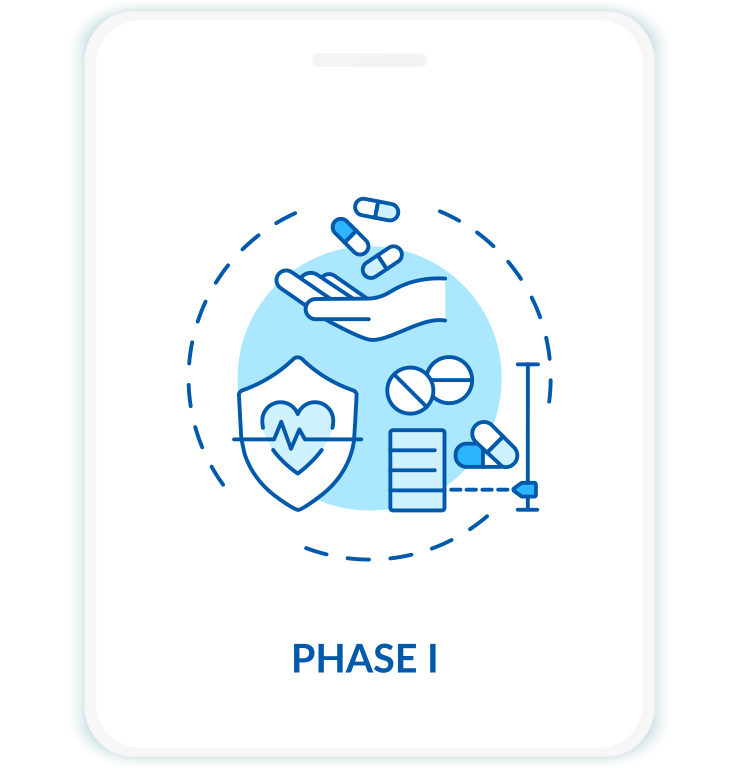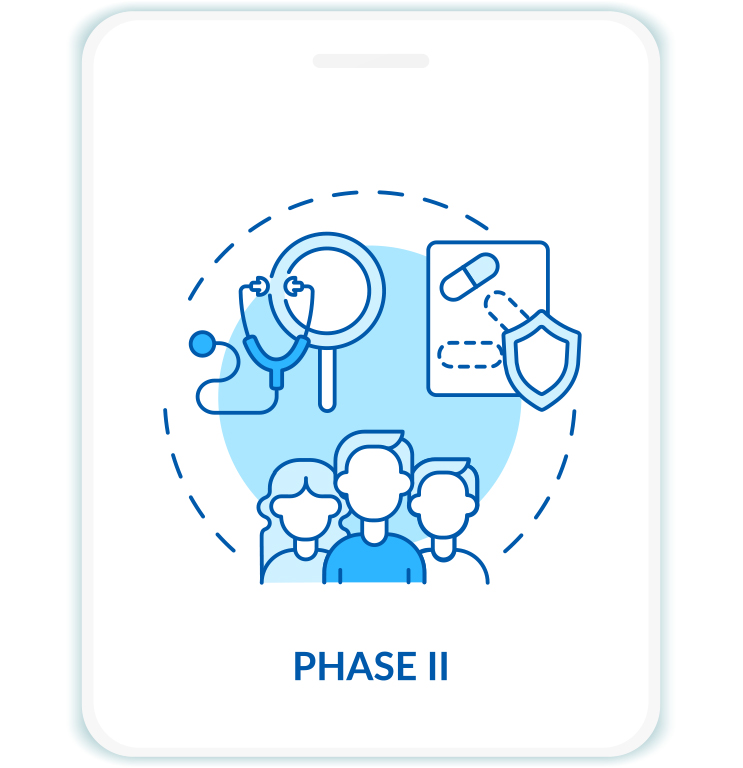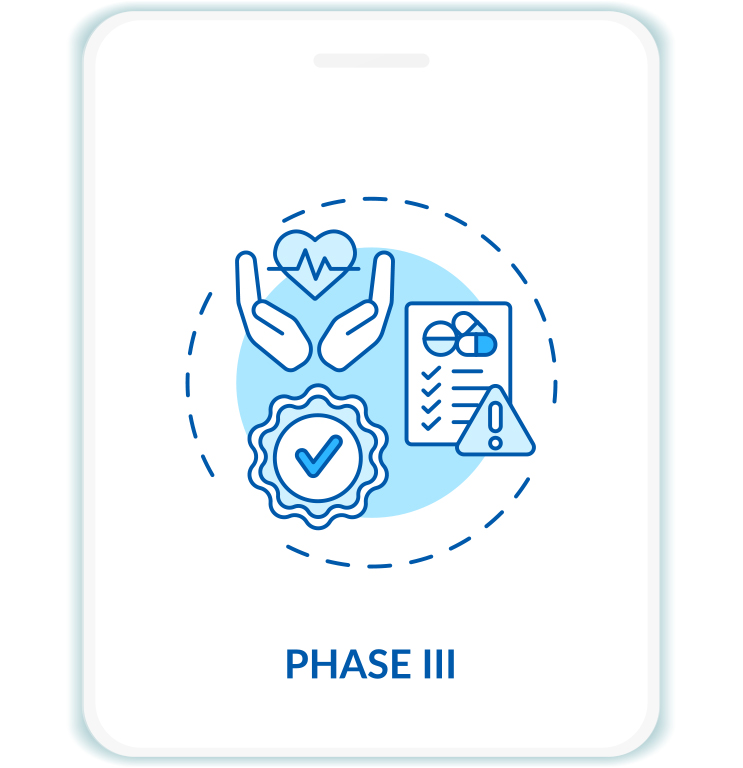Rely on our expertise in phase I-III research
Our team can compile the data and provide the study outcomes to help with regulatory approvals. Clinical trials are usually conducted in phases which build on one another. Each phase is designed to answer certain questions.
Phase I
Phase I studies are usually the first phase of studies which involve human participants.
Phase I studies determine the safety of the investigational product.

- Phase I trials usually include a small number of people (up to a few dozen).
- Safety is the main focus of Phase I studies. The research team closely monitors study participants to determine if the intervention will result in any side effects.
- Placebos (inactive treatments) are not used in phase I trials.
If a new treatment is found to be safe in a phase I clinical trial, the next step is to conduct a phase II study to determine the efficacy of the investigational product.
Phase II
- Phase II studies involve slightly larger sample sizes (i.e., 25 to 100 participants).
- They are treated using the dose and method found to be the safest and most effective in phase I studies.

- Typically in a phase II clinical trial, everyone gets the same dose of investigational product. However, some phase II studies randomly assign people to different treatment groups. These groups may get different doses or get the treatment in different ways to see which provides the best balance of safety and response.
If enough participants benefit from the Phase II study intervention, and any observed side effects are negligible, the next step is to conduct a Phase III study.
Phase III
- Phase III clinical trials compare the safety and effectiveness of the new treatment against an established standard treatment.
- Phase III clinical trials are conducted at an even larger scale (i.e., thousands of study participants).
- These studies are often done in many places across the country (or even around the world) at the same time.
- These studies tend to be longer in duration and can last several years.

As with other trials, participants in Phase III clinical trials are closely monitored for side effects, and treatment is stopped if a safety concern is raised
